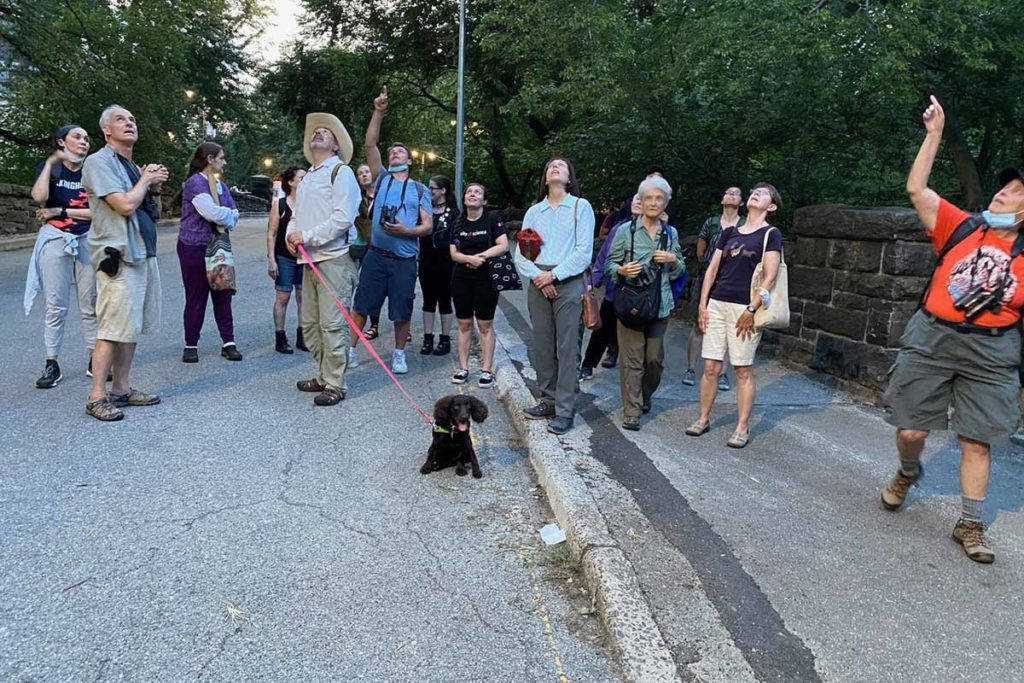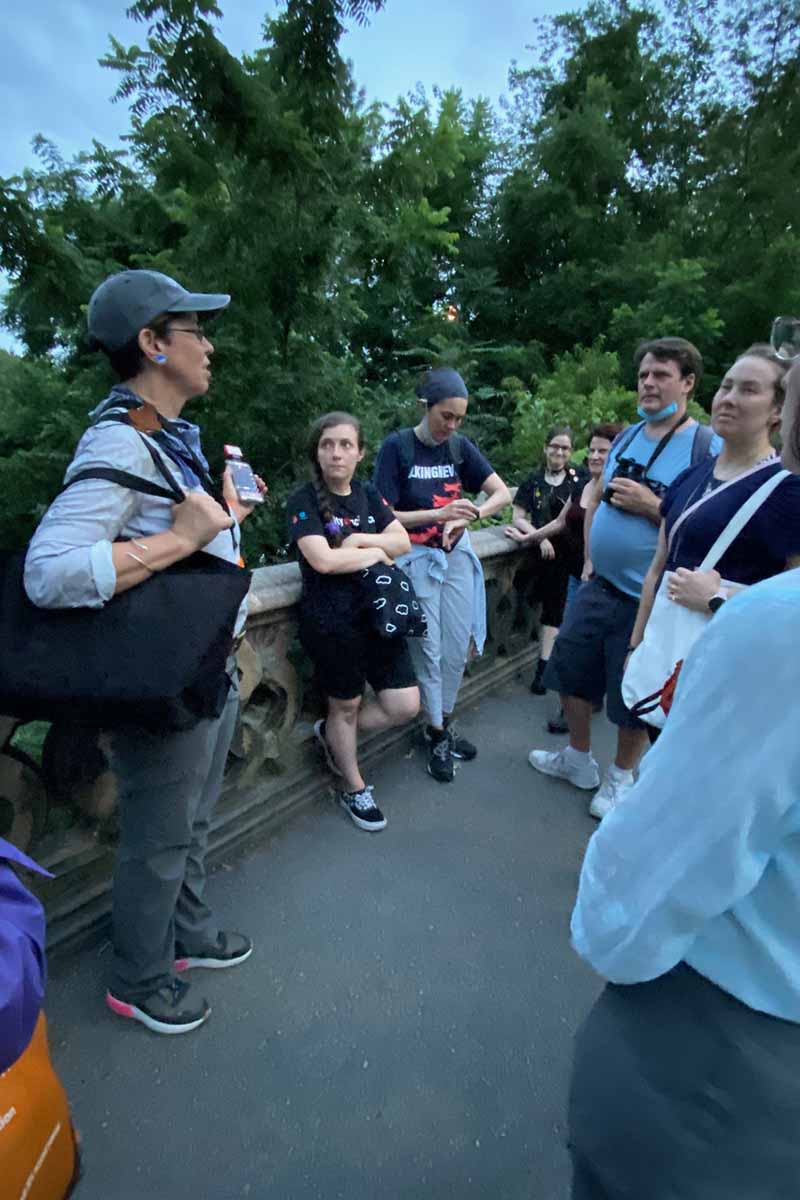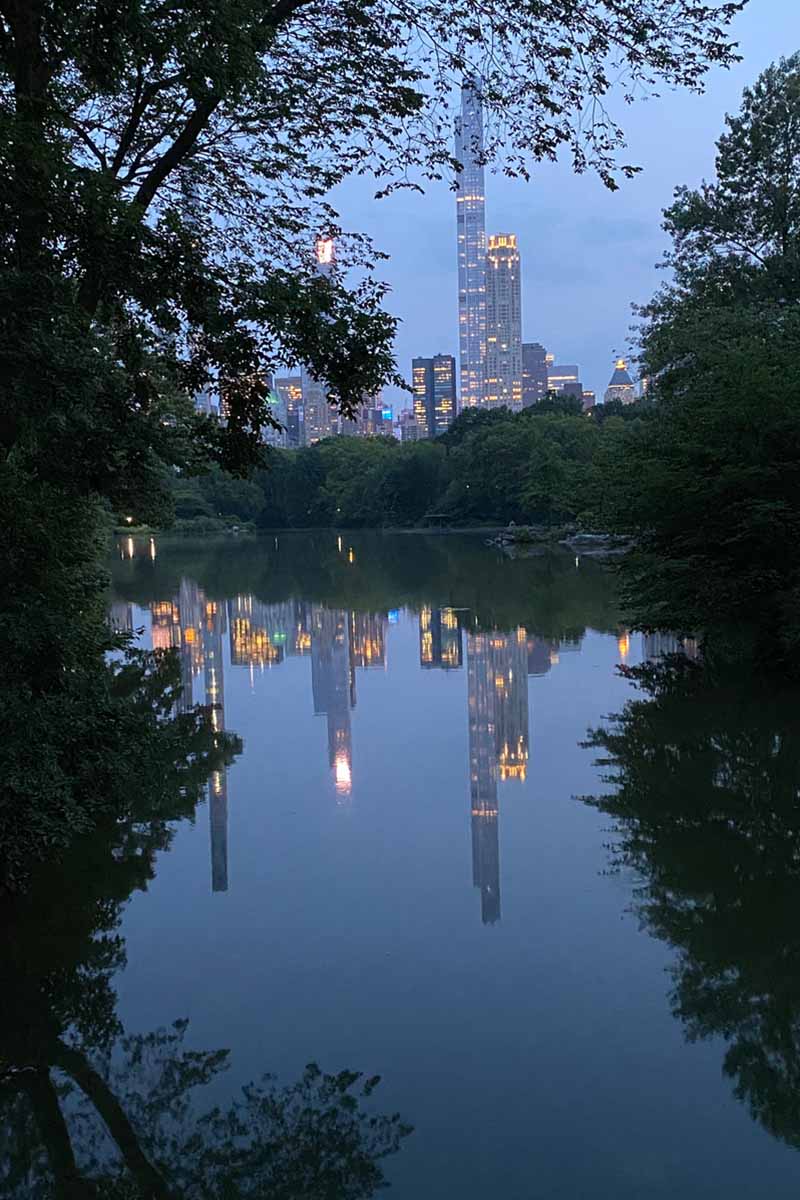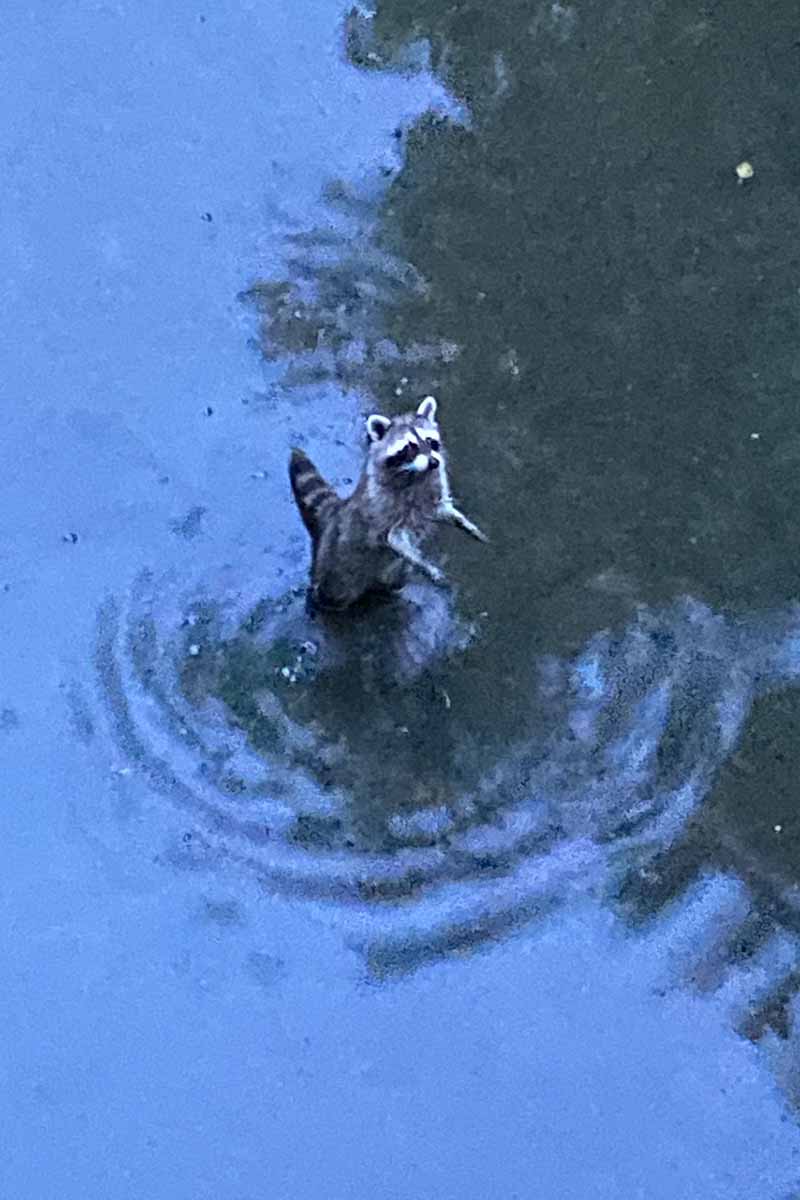Registrar: Ellen Hoffman (with Barbara Saunders onsite)
Participants: 20
Weather: Clear, 85 degrees F
Bat Species: 2
Trip leaders Danielle Gustafson and Brad Klein led us on a sold-out, magical evening walk in Central Park on the hunt for bat species that often frequent the city’s summer evening skies. (Some registrants on the waiting list were able to participate after last-minute cancellations.)
While waiting for the skies to darken, Danielle and Brad introduced us to the ecology and conservation status of bats. We learned that bats come out after Chimney Swifts depart for their roosts, so as we entered the park, we were thrilled to be greeted by a myriad of chittering swifts as they swooped overhead, catching their last insect snacks of the evening. And, surprisingly, the swifts were joined en masse by what Danielle called a “congregation” of dragonflies (Swamp Darners, in this case), also on the hunt for their last evening meal. Soon we were at Balcony Bridge, where we detected our first bat, an Eastern Red Bat (Lasiurus borealis), by using an ultrasonic sound detector that picks up a bat’s echolocation calls. We learned that each bat species has its own distinct call. Before heading to the Upper Lobe’s wood-chip path, we were surprised by the croaking calls of two Black-crowned Night-Herons flying over the lake, perhaps on their way to a night roost.
Onward we walked, listening closely for bats, as Danielle and Brad led us to the Burns Lawn, that large grassy area between the Upper Lobe and the Swedish Cottage. We settled on blankets under the now darkened skies, where we spent the rest of the evening listening for bats. We were soon rewarded with the calls of Big Brown Bats (Eptesicus fuscus), which turned out to be the most numerous bat species of the evening. Danielle and Brad explained the challenges of being a bat, from white-nose syndrome (first identified in the U.S. in 2006 in an upstate New York cave) to the dangers of migration, as well as predators (hawks, falcons, and owls among others) who can snatch bats mid-air or while resting on trees. We also learned that bats can be seen throughout most of the year in Central Park, with up to nine different species possible. After an hour or so of enjoying the night sounds, we reluctantly made our way back out of the park, leaving with a new sense of what the city’s night skies can hold for us. Above all, always keep your naturalist’s eyes and ears open to those skies above!
Species Lists
Bats
Eastern Red Bat
Big Brown Bat
Birds
Chimney Swift
Black-crowned Night-Heron
Odonates
Swamp Darner
Mammals
Raccoon (begging below Balcony Bridge)





